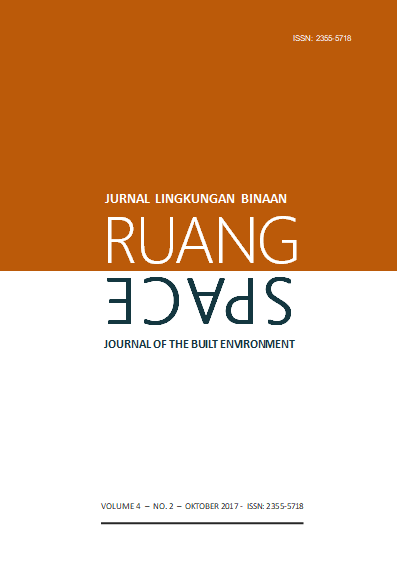Representasi Sistem Sosial Masyarakat pada Pola Permukiman Desa Trunyan
Abstract
As part of the built environment, human settlements are not singularly about physical forms. They also offer a much deeper denotation to non-physical elements. Physical formations often deliver messages reflecting values and meanings that are invisible, but well imbedded within. Taking these circumstances as its context of study, this paper concentrates on how social systems are represented in the spatial settings of a human settlement and its built forms. It chooses Trunyan Village as its case study. This is one among many Bali Aga settlements found in Bali Island, which is located on the shore of Lake Batur. As the case of other Bali Aga communities, Trunyan offers a pre-Majapahit civilization. Using qualitative approaches, this study reveals that the overall physical layout of this settlement is governed by a concept of luan-teben (upstream-downstream) and a specific concept of north, east, south, and west that has no bearing to cardinal compass points. North-south orientation is held in a more prominent manner than that of east-west. They believe that north (hulu/luan) is where the mountain stands (referred to Abang Mountain which stands on the eastern side of this village. South direction (teben) is where water lays (referred to Lake Batur, which lays to the west side of Trunyan). Spatial formation of homes within this settlement is an expression of a virilocal kinship, in which marriages between members of a clan (dadia) is a must. Homes of families that belong to one dadia will be placed in a tight zone. They therefore live in a close distance from one family to another. Further spatial arrangements of the whole settlement are explained in the text.Keywords: representation, settlement, community social system, Trunyan Village Bangli
Downloads
The copyright of the received article shall be assigned to the journal as the publisher of the journal. The intended copyright includes the right to publish the article in various forms (including reprints). The journal maintains the publishing rights to the published articles.



